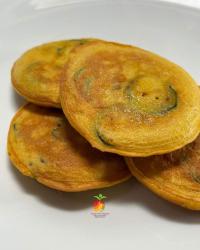Copy Link
Add to Bookmark
Report
HOMEBREW Digest #2225

This file received at Hops.Stanford.EDU 1996/10/11 PDT
Homebrew Digest Thursday, 10 October 1996 Number 2225
FORUM ON BEER, HOMEBREWING, AND RELATED ISSUES
Mike Donald, Digest Janitor-in-training
Thanks to Rob Gardner for making the digest happen!
Contents:
Blue Moon (Chris P Crigger)
1968 in a stout (Brian Dulisse-1)
Don't believe everything you read / sparge water pH ((George De Piro))
RE: Brewing Chicha (Bill Ridgely 301-827-1391 FAX 301-827-3053)
Re: Why are copper kettles used? (Carl Hattenburg)
Copy of: Bleach, raw Wheat, persistent positive iodine t*st, ("David R. Burley")
Re: Why Wy1056 ? (Scott Murman)
Couscous Beer?? (Ken Sullivan)
WTB 1.5" copper pipe ("Bridges, Scott")
Hey, that was a hair, not a nit. (RUSt1d?)
DATELINE DEAL ("Preston M W (Mike)")
RE: Beer Filtering (Ken Sullivan)
Filters/HopDevil (Jim Busch)
Real Ale (John Wilkinson)
RE:> favorite IPA ((Jeff))
Red Wolf (Gregory King)
filtering ((John W. Carpenter))
pilsner urquell ((Ronald Moucka))
Corona Mill vs. Maltmills (U18183@UICVM.UIC.EDU)
RE: SPARGE PH (Joe Rolfe)
pH of sparge water (Peter Ensminger)
Re: Applejack lager ((Tam Thompson))
IPA, RIMS, etc. (Clint Weathers)
Re: aged Barley Wines ("Thomas A. Wideman")
Improved wort chiller hopefully. (Jzdial@aol.com)
For SUBMISSIONS to be published, send mail to:
homebrew@aob.org
For (UN)SUBSCRIBE requests, send mail to:
homebrew-digest-request@aob.org
and include ONLY subscribe or unsubscribe in the BODY of the message.
Please note that if subscribed via BEER-L, you must unsubscribe by sending
a one line e-mail to listserv@ua1vm.ua.edu that says: UNSUB BEER-L
If your address is changing, please unsubscribe from the old address and
then subscribe from the new address.
If your account is being deleted, please be courteous and unsubscribe first.
For technical problems send e-mail to the Digest Janitor,
homebrew-digest-owner@aob.org.
OTHER HOMEBREW INFORMATION
http://www.aob.org/aob - The AHA's web site.
http://alpha.rollanet.org - "The Brewery" and the Cat's Meow Archives.
info@aob.org - automated e-mail homebrewing information.
ARCHIVES:
At ftp.stanford.edu in /pub/clubs/homebrew/beer via anonymous ftp. Also
http://alpha.rollanet.org on the web and at majordomo@aob.org by e-mail.
COPYRIGHT:
As with all forums such as this one, copyrights are retained by the
original authors. In accordance with the wishes of the members of the
Homebrew Digest, posts to the HBD may NOT be sold or used as part of a
collection that is sold without the original authors' consent. Copies
may ONLY be made available at no charge and should include the current
posting and subscription addresses for the HBD.
----------------------------------------------------------------------
From: Chris P Crigger <chris_p.crigger@twva.med.navy.mil>
Date: Thu, 10 Oct 1996 13:17:29 -0500
Subject: Blue Moon
Is anyone familiar with the Blue Moon Brewing Co.??
They have a wonderful Belgian White, with just a hint
of coriander. My question is this though:
Is it the oats in that beer that give it it's crisp
taste??
I have just started brewing with a small kit, and have had
a couple of successes in my few "first attempts"!
I am picking up tips from this list.
thanks,
Chris
------------------------------
From: Brian Dulisse-1 <Brian_Dulisse-1@sbphrd.com>
Date: 10 Oct 96 12:26:42 EDT
Subject: 1968 in a stout
has anyone tried using the wyeast 1968 for a stout? email please.
thanks
bd
brian_dulisse-1@sbphrd.com
------------------------------
From: George_De_Piro@berlex.com (George De Piro)
Date: Thu, 10 Oct 1996 14:14:29 -0700
Subject: Don't believe everything you read / sparge water pH
Hello!
John Varady says that Bass is an IPA. This is what the label says,
but they, like many American brewers, seem to label beer however they
want, with no regard for traditional style guidelines!
Let your palate be the judge. Bass is NOT an IPA, no matter what they
try to tell you on the label! (Neither is Oregon IPA an IPA, nor is
BBC's Cranberry Lambic even remotely related to lambic, nor do they
appear to use a true Bavarian Weizen yeast strain in their dark wheat,
etc.)
--------------------------------
About sparge water pH adjustment: sometimes I remember to acidify the
sparge water to around 6.0, sometimes I don't. I haven't really
noticed a difference in the beer either way. I think it's probably
more of a problem if you over sparge the grains without acidifying the
water. In that case, you risk leaching tannins from the grains as the
grain bed's pH rises.
Simple answer: don't over sparge, and you won't need to acidify your
sparge water!
Have fun!
George De Piro (Nyack, NY)
------------------------------
From: Bill Ridgely 301-827-1391 FAX 301-827-3053 <RIDGELY@A1.CBER.FDA.GOV>
Date: Thu, 10 Oct 1996 14:00:18 EST
Subject: RE: Brewing Chicha
In HBD #2224, Scott Kaczorowski posts about his chicha brewing
experiments. It's good to hear that all of Scott's work has not
been in vain. He and I have been communicating via private e-mail
for some time, and I've been fascinated with his efforts to grow,
malt, and brew with his own native corn.
I highly recommend a visit to his website. Lots of good info and
photos!
On the subject of using generic "store-bought" yellow corn, Scott
writes:
>While we took the trouble to grow our own (blue) corn, I
>see no reason why one could not start with good ol'
>yellow corn from the grocery store (domestic 20-row?)
>In fact, I plan on doing this if only to see what kind
>of chicha it makes.
Wendy and I tried this when we first started brewing chicha,
using dried yellow corn that was being sold as horse-feed. I
can't say we were terribly happy with the results. Germination
was spotty, and the resulting jora (malted corn) had a good bit
of that "dirty dishrag" character we mentioned in our Zymurgy
article. I think using a true "seed-grade" corn would be
preferable if one could locate a stock which hasn't been treated
with a fungicide (not uncommon with commercial seed).
I'd love to try some of Scott's chicha, especially if he plans to
try his hand at frutillada, the version flavored with fresh
strawberries. Yum!
Bill Ridgely
Alexandria, VA
------------------------------
From: Carl Hattenburg <CHattenburg@Perstorp-us.com>
Date: Thu, 10 Oct 1996 14:25:20 -0400
Subject: Re: Why are copper kettles used?
>>They either have a piece of copper at the bottom or along the way
before the wort cools.
Does this mean I should put a penny into each bottle at priming? ;)
- - Carlos,
http://theweeds.smxcorp.com/carlos/carlos.html
------------------------------
From: "David R. Burley" <103164.3202@CompuServe.COM>
Date: 10 Oct 96 14:25:18 EDT
Subject: Copy of: Bleach, raw Wheat, persistent positive iodine t*st,
Brewsters:
Part 2 of 2
Sorry, this was bounced because I used t*st in the subject line, so here it is
out of sequence.
- -------------------------------------------------------------------------
Jim Booth writes:
"1) Would using 1 gal of the clorine version of bleach at 1t/gal water in
a 5 or 7 gal carbouy, then swirling to wet all the surfaces every few
minutes be equivelent to filling and letting the carbouy stand full?
Opinions...facts....I understand Public health people advise 1t/gal in
dish/silverware rinse water. Full carbouys take time, heavy lifting,
uses water and chlorine and if it serves no real purpose.... "
I suppose you mean household bleach , like Chlorox, by "clorine (sic) version
of
bleach".
For everything except pressurized stainless steel ( like Cornelius Kegs) , I
use
Chlorox in the following manner
1) Safety glasses, rubber gloves and old clothes
2) Put in pure bleach - about 1 cup - rotate the carboy until all of the
insides
are coated. Purpose: To dissolve any organic material using both the alkaline
nature of the bleach as well as the oxidizing power. Add about 1/2 gallon of
hot water and rotate the carboy again, and discard. Give it three rinses of
about a 1/2 gallon each with hottest tap water followed by a rinse with hot,
boiled water. This is fast and doesn't require much lifting. Use hot tap water
because it will have fewer bugs than cold water. My hot tap water is 180F on
brewing day. Dangerous, but effective. Since we have no children home any
longer or any old people around it is OK, no one gets burned except me.
3) don't use Chlorine containing agents on SS that you intend to pressurize.
Corrosion can weaken it at a critical point and may be dangerous. Use oxygen
based sterilants/sanitizers like acidic sodium metabisulfite or a commercial
preparation.
- ---------------------------------------------------------------------------------
Mark Thompson writes:
"I have made several batches of beer using either raw wheat
or raw barley (stout %25). In pushing the envelop of cost
to the lowest possible point i thought that using flour for
a raw wheat would be an idea worth trying."
Why not try wheat from a feed store, it should be cheap and safe to use, with
no
anti-fungals, etc. often found on seed grain. I use generic Cream of Wheat
sometimes. I always do a pre-cook with about 2 # of crushed barley malt
added.
- ---------------------------------------------------------------------------------
- -
Sara&Rod of Beerdogs writes:
"After 2.5 hrs @ 158, iodine still indicated incomplete
conversion. i relaxed, didn't worry, told myself that it was just a test
run anyway and proceeded to proceed with sparging as usual. the final
result was a gravity of about 1.052 on a target of 1.060. my question:
was my iodine erronious or is does my gravity reflect some starch content?"
1) Was this a pale ale malt with a particularly low level of enzymes? What was
the grain bill? Did you have a lot of adjuncts? I would think even Alpha
Amylase should have chewed up the starch in the malt after that time if there
had been any substantial quantity of enzymes. I would be surprised, but it may
be that your pale ale malt can't be taken all the way to 158F directly. Cut
back on your temperature to 155F next time
2) A negative iodine test is one in which the iodine does not change color to
reddish - blue - black
( depending on the chain length of the starches) and just stays
brown/yellow.? How are you running the test? Did you get blue black on the
mash liquid, the liquid you squeezed from the grains or on the grains?
3) What might explain the low OG and the failure to get a negative iodine test
is a poorly milled malt. This is the most common reason for poor efficiency.
Having recently purchased a new mill, I tried various settings and got an OG of
1.035, 1.045, 1.060 and 1.064 for various settings and procedures for the same
recipe with the same 10# grain bill in 5.5 gallons.
4) Pale Ale Malt is highly modified and made from a low nitrogen barley so you
can do a single infusion mash. By itself, it does not require a protein rest.
- ---------------------------------------------------------------
From: "Ray Robert" <Ray_Robert@bah.com>
"After seriously considering chucking all of my equipment, I reconsidered and I
am now determined to overcome my brewing problems. The problem I face is
recurring infections (in my beer of course). My last four batches have had
some sort of infection or another, and I am getting a little frustrated."
Robert ,
If you are using Papazian's crazy carboy/overflow method as a primary fermenter
with attached hose, dump it. The overflow hose or poorly cleaned carboy is your
problem. Ferment in a bucket or plastic container (which can be cleaned easily)
and rack to the carboy after a week.
Use my above bleach cleaning method. Iodophor is only good with clean vessels.
It cannot sanitize anything under a layer of gunk.
- -----------------------------------------------------------------
Keep on brewin'
Dave Burley
Kinnelon, NJ 07405
103164.3203@compuserve.com
------------------------------
From: Scott Murman <smurman@best.com>
Date: Thu, 10 Oct 1996 11:33:42 -0700
Subject: Re: Why Wy1056 ?
I think you've answered your own question on why 1056 is so popular.
It's clean and robust. I usually use it for porters, which I add
all kinds of adjuncts to, and don't want to mask the flavor and/or
aroma with the yeast. It also seems to ferment well over a wide
temperature range, and can also handle fairly high gravity brews.
It's certainly not for everything, but it definately is good for
what ales you.
SM
------------------------------
From: Ken Sullivan <kj@nts.gssc.com>
Date: Thu, 10 Oct 1996 12:52:04 -0600
Subject: Couscous Beer??
As I am eating my lunch I wondered if anyone had ever
made beer out of couscous?? And... what is couscous anyway?
I asked around the office and got answers from 'pasta' to
Morroccan Wheat. Anybody know?? Can it be mashed?
Anybody tried it??
kj@nts.gssc.com
------------------------------
From: "Bridges, Scott" <bridgess@mmsmtp.ColumbiaSC.NCR.COM>
Date: Thu, 10 Oct 96 11:51:00 PDT
Subject: WTB 1.5" copper pipe
As part of my RIMS construction project, I'm looking for 1.5" copper pipe.
As I've read here before, getting a supplier to sell less than a full 10 or
20' length is a bit of a problem. Does anyone have a lead on the best place
to get it, or does anyone have some that they could sell? I only need about
18-24". TIA.
Also, in the
never-ending-quest-to-spend-large-amounts-of-money-to-make-cheaper-beer
dept, I noticed an add in the current Grainger flier for a point of use
water heater. They have a 4 gal capacity heater for about $135. The 2.5
gal heater is a few bucks less. Anyone ever use one of these? Might be
good for a hot liquor tank. Do they work? Can you control them with any
accuracy? Just curious. I already have a hot liquor tank (Sankey keg +
propane cooker), but I thought that someone else might be interested......
Scott
------------------------------
From: RUSt1d? <rust1d@li.com>
Date: Thu, 10 Oct 1996 15:21:03 -0400 (EDT)
Subject: Hey, that was a hair, not a nit.
> John Varady says that Bass is an IPA. This is what the label says,
> but they, like many American brewers, seem to label beer however they
> want, with no regard for traditional style guidelines!
>
> Let your palate be the judge. Bass is NOT an IPA, no matter what they
Duh, i said, "Hard to believe but Bass Ale is an 'IPA'". Hard to believe
indeed.
I did not say 'Bass is the definitive IPA' or even 'Bass is a good IPA', or
even 'Bass is good', I simply regurgitated what I've seen (on the bottle) and
with doubt at that (the quotes around IPA were meant to express doubt).
What is with all the nit-picking going on with in HBD? (i.e. Dave getting
corrected for using the term "Leaf hops", sanitation's not sterilization, Carl
getting hacked for offering his robotic palate, the good/bad job done by the
GBAF PPBT) It also seems that many of these nits are being picked
by those who we respect and contribute much knowledge. It's great to see
posts from these people, but when they say stuff like this, I feel as if
i'm being talked to down some ones ski-slope of a nose. Sometimes, I feel
as if some of these posts are posted for the sole purpose of ego building.
And while i'm ranting, I really hate it when someone catches up on several
digests at once and then feels compelled to dredge up all kinds of old
threads that were happy to be dead (these posts can usually be identified
by the multiple slashes '/' in the subject line and most of the time really
ought to be delivered directly to the poster who asked, especially when the
post is several days old or has already been beaten in to the ground).
Sorry this when from a peev to a full gripe. Maybe i'm just tense since i'm
selling my soul this weekend.
And remember boys and girls, "Dry hopping isn't really dry!" - Kelly Jones
P.S. An upgrade to HBRCP is on my web page. Small fixes...
John Varady
http://www.netaxs.com/~vectorsys/varady/index.html
Boneyard Brewing Co. "The HomeBrew Recipe Calculating Program"
"Ale today, Gone tomorrow."
------------------------------
From: "Preston M W (Mike)" <mpreston@ford.com>
Date: Thu, 10 Oct 1996 15:15:26 -0400
Subject: DATELINE DEAL
- -Sunday on NBC-
"lager sir is regal"
Mike Preston
------------------------------
From: Ken Sullivan <kj@nts.gssc.com>
Date: Thu, 10 Oct 1996 13:27:32 -0600
Subject: RE: Beer Filtering
Randy wrote:
My questions: 1) Will this work? It looks like a filter commercially
available ("The Filtration Kit", pg. 52 latest Zymurgy) and I'm pretty
sure that I can buy a .5 micron filter cartridge (like the one in the
ad). 2) How would I clean the filter after use? Also, should it be
stored wet or dry (full of liquid or empty)? 3) If I choose to
naturally carbonate (keg beer before it's finished fermenting to
carbonate, not sure I'm using the right term) can I still filter
the carbonated beer? 4) Any advice on transfer pressure, etc.
***************************************************************************
I purchased the beer filter kit from the filter store, with the .5 micron
filter. I used the same setup you propose: 2 corny kegs and a CO2
cylinder to push the beer through. I recently used the setup again
to filter some raspberry mead. The key is to rack the beer into
the first keg, attach the filter to the long down tube of both kegs,
close the kegs and open the safety valve on the second keg. I was able
to push the beer through the filter (5.0 micron filter) with about
30 psi. My first experience with the (0.5 micron filter) was very
dissappointing, just about couldn't get it to flow at all! THe
5 micron filter worked great and cleared the mead in short order.
If you are planning to used natural carbonation (priming in the keg)
then definitely go with the 5 micron filter and not the 0.5 micron
filter. I was told that the 0.5 micron filter would remove the
yeast. Also the 5.0 mircon filters are MUCH cheaper and easier to find.
As for cleaning the filter, fill a keg some hot water and swap the
filter connection... to back flush the filter. Store the filter almost
full with a weak bleach solution, being very careful to avoid contacting
any stainless steel with the bleach solution. When you are ready to
filter again, push a bunch of hot water through the filter to rinse it.
You can buy the filter housing at Builders Square, DIY, Budget HOme Centers,
get the WHOLE HOUSE kind. I bought another one with 2 filters for $34.
Enjoy :-)
KJ
------------------------------
From: Jim Busch <busch@eosdev2.gsfc.nasa.gov>
Date: Thu, 10 Oct 1996 15:35:16 -0400 (EDT)
Subject: Filters/HopDevil
<I purchased a water filter (from the Filter Store... Boy did I get ripped
<off, paid $79 for a friggin' $19 water filter... Live and Learn friends,
<Live and Learn...) two years ago with a variety of filter cartridges (you
<can get the filter cartridges at any big hardware chain for about $2 a
<piece, This beats the hell out of paying $39 from the Filter Store).
The filters sold for brewing are much better and different from the
hardware chains water filters. Efficiency ratings are higher with
the brewer version and reusability is also greater. You can buy
disposable beer filters from Crystal Clear.
<Nothing even came close until a
<few months ago when I went up to Victory Brewing in Downington, PA and had
<their Hopdevil. Unfortunately, neither of these beers have a wide distribution
<(Victory does bottle and sell locally). Tupper's Hoppocket is a distant third
<to these (which is more a complement to the first two than a criticism of
<Hoppocket) and is available in most mid-atlantic states.
You have good taste! Interesting note, Victorys brewmaster (Ron Barchet) also
developed Tuppers Hop Pocket when he was Dominions brewmaster. Look for
Victorys distribution to widen over the next year into De/Md/DC.
Jim Busch
See Victory Brewing at:
http://www.victorybeer.com/
------------------------------
From: John Wilkinson <jwilkins@imtn.tpd.dsccc.com>
Date: Thu, 10 Oct 1996 14:35:31 -0500
Subject: Real Ale
My previous post was truncated for some reason. I wrote:
Geoff writes:
>Good beer is naturally conditioned in the cask, contains living yeasts, ...
Plus another sentence about ral ale being brewed without sugar.
My comment on this was that the only beer I have brewed using sugar was
a recipe for Fuller's London Pride from the CAMRA book Brewing Real Ales
(or similar title). Does this mean CAMRA advocates making other than real
ale? Or does it mean Real Ale is not as strictly defined as some think?
John Wilkinson - Grapevine, Texas -
------------------------------
From: mcnallyg@in83b.npt.nuwc.navy.mil (Jeff)
Date: Thu, 10 Oct 1996 15:54:30 -0400
Subject: RE:> favorite IPA
Hi All,
Its been very interesting and informative to see the recent threads on beer
styles
("best" Octoberfest, ultimate six-pack, and now IPA's).
My vote for the best IPA would be either "dead guy ale" or "Santa's private
reserve ale", both made by Rogue. However, I'm not sure if either of these are
truly IPA's. They fit what I would call an IPA (based on my interpretation of
the
AHA style guidelines), but I'm not a "qualified" beer judge. Can any of the
BJCP
judges in the audience comment on this (Al K., Jim Busch, Jim Dipalma, etc.)?
In order to keep this thread going, anyone want to cast some votes for what
*readily available* microbrews would "define" the Dusseldorf Altbier style?
I've brewed a couple of batches of what I think is a good altbier, but it has
not done well in competitions. Most comments that I got back seem to indicate
that it was a good brew, but just not true to style. I've never been to
Dusseldorf, so I cant really compare it to any of the "true" altbiers.
Hoppy brewing,
Jeff
==============================================================================
Geoffrey A. McNally Phone: (401) 841-7210 x152
Mechanical Engineer Fax: (401) 841-7250
Launcher Technology & Analysis Branch email: mcnallyg@in83b.npt.nuwc.navy.mil
Naval Undersea Warfare Center
Code 8322; Bldg. 1246/2
Newport, RI 02841-1708
------------------------------
From: Gregory King <GKING@ARSERRC.Gov>
Date: Thu, 10 Oct 1996 15:57:50 -0500 (EST)
Subject: Red Wolf
I stumbled across an article in a magazine called "Prepared Foods"
(June 1996 issue) that describes the development of Anheuser-Busch's
Red Wolf beer.
An 11-member team was given 30 days to crank out a product to compete
with Killian's Red. They succeeded in 28 days.
The bulk of the article (maybe 85% of it) describes the efforts of the A-B
team to come up with the packaging (i.e. what do the labels look like) and a
marketing strategy for the product. In the small section of the article that
describes the actual product development, the main point is that the barley
needs to be roasted in just the right way to get that red color.
Interesting, huh?
Greg King
gking@arserrc.gov
Philadelphia, PA
------------------------------
From: jwc@med.unc.edu (John W. Carpenter)
Date: Thu, 10 Oct 96 16:20:01 EDT
Subject: filtering
Scott writes:
>>>>
I purchased a water filter (from the Filter Store... Boy did I get ripped
off, paid $79 for a friggin' $19 water filter... Live and Learn friends,
Live and Learn...) two years ago with a variety of filter cartridges (you
can get the filter cartridges at any big hardware chain for about $2 a
piece, This beats the hell out of paying $39 from the Filter Store). All in
all I found that the filter worked very well with the .5 micron cartridge
on very light color and lightly hopped beers. I also noticed a big loss in
hop flavor and overall body in my brews, but as they said, the beer was
crystal clear without any sign of sediment!
>>>>>
I don't think you got ripped. You are paying for the filter mostly. Sure,
you can get a 10" housing other places for $20-25, and those cheapo
filters for $5. The cheap filters are one time only filters. The $39 are
reusable and cleanable, and if taken care of will last quite some time.
The $39 are high efficiency, they remove over 99% of particles above the
rated size. The cheap filters don't come close to this efficiency. I've
been very happy with my 5 micron filter. (Std. disclaimer) I haven't
noticed ANY lack of taste or body in my filtered brews.
>>>>
I cleaned the filter by backwashing it between two kegs with a bleach and
water solution. This works very well to removed any residue on or in the
filter. I also would always backwash the filter before I would filter the
next batch to assure cleanliness. I always have stored my filters dry but
have friends that store them in the filter in a Co2/water environment.
>>>>
I sanitize my kegs with iodophor, then just push the solution through the
filter and into another keg. I next just switch the empty sanitized keg
that is also full of CO2 to the other side of the filter and then run my
beer through the filter. I backwash to clean my filter, then store it in
iodophor in the refrigerator.
>>>>
I also found that I lost some carbonation when I ran carbonated beer
through the filter.
>>>>
This can be minimized if you presurize the receiving keg prior to
filtering, kind of like counter pressure bottle filling.
>>>>
Before filtering I would get the beer down to about 29 F and transfer it
through the filter at about 32 psi. This worked very well for me, who knows
for you.
>>>>
15 psi works for me with a 5 micron filter. Cold is good. It also allows
you to see how full your receiving keg is getting. You can watch the
condensation work it's way to the top of the keg.
John Carpenter, Chapel Hill, NC
jwc@med.unc.edu
------------------------------
From: rmoucka@omn.com (Ronald Moucka)
Date: Thu, 10 Oct 1996 20:07:09 GMT
Subject: pilsner urquell
Kirk Fleming was looking for Pilsner Urquell on tap.
Try Marie's restaurant in Berthoud. Just about half way between Ft.
Collins, Boulder, and Denver. Right in the middle of Colorado's Golden
Triangle of Beer. Last time I was there (a few months back) they had
both PU and another Bohemian beer which I cannot remember (started with
an S) on tap. Excellent cuisine too.
Cheers,
Ron Moucka (which means "fine flower" as in milled grain in czech
------------------------------
From: U18183@UICVM.UIC.EDU
Date: Thu, 10 Oct 96 15:17:51 CDT
Subject: Corona Mill vs. Maltmills
I have reached the point in my brewing where I need to buy a mill.
I figure I have two choices: A Maltmill for $100+ or
A Corona for $40
Considering the difference in cost amounts to a years worth of malt,
is it really worth it to get the Maltmill? Specifically:
1) Is the TASTE of the beer different? I hear lots of stories of crushed
husks and tannin extraction and astringency, but is it real?
2) Is the extraction markedly different? Will a Maltmill add 10 points
to my extract over a Corona?
Im sure there are brewers out there who have pondered this question and
made a decision opting for a Corona - are you happy about it? And, if not
do you want to sell me your old one cheap? :)
TIA,
- -Paul
Paul Sovcik
Western Springs, IL PJS@uic.edu
------------------------------
From: Joe Rolfe <onbc@shore.net>
Date: Thu, 10 Oct 1996 16:49:30 -0400 (EDT)
Subject: RE: SPARGE PH
in regards to questions about adjusting sparge water,
ph should be checked, such that the runoff near the end does not climb
to high. by to high brewing texts indicate it is best to keep the
ph of the final runoff below 6.0, and beter if below 5.7.
another addition of calcium may also be needed to insure
correct levels in the kettle. this addition can be made in lump sum at
the beginning of the water treatments or sprinkled on the mash. best
results would come from (IMHO and others) at the hot liquor tank.
you also can add acid and salt to the kettle, if required. you want to start
the boil in the kettle with a ph of less than 5.6 and possible closer to
5.4 or so depending on the beer (bottom fermenters high, top fermenters low).
it has been mentioned that the calcium content of the beer should be
50 to 80 mg/L, a good ly portion gets lost in the mash and boil, so adjust
all along hte process.
good luck
joe
------------------------------
From: Peter Ensminger <ensmingr@npac.syr.edu>
Date: Thu, 10 Oct 1996 17:47:56 -0400 (EDT)
Subject: pH of sparge water
Adam Back asked about the pH of sparge water ...
Sparge water pH is important. If it is too high, it will extract
polyphenols (tannins) from the grains into the wort and this can lead to
an astringent beer. One way to lower the sparge water pH is to add gypsum
(CaSO4.2H2O). However, for water which is highly alkaline to begin with,
you may need to use lactic acid or phosphoric acid.
My impression, from having lived in Germany for a while, is that German
water is very chalky (alkaline). This leads me to ask:
How do German brewers, who are constrained by the Rheinheitsgebot, lower
the pH of their mash and sparge water?
Cheers!
Peter A. Ensminger tel: 315-478-6024
256 Greenwood Place email: ensmingr@npac.syr.edu
Syracuse, NY 13210 URL: www.npac.syr.edu/users/ensmingr/
U.S.A.
------------------------------
From: Tamth@MAIL.UTEXAS.EDU (Tam Thompson)
Date: Thu, 10 Oct 1996 12:36:05 -0500
Subject: Re: Applejack lager
Jim Booth:
Tried to reply to you, the mailer-daemon kept kicking it back,
so here's my applejack lager report:
Jim Booth says:
>>I'm reading back issues and you talked about applejack lager. I've brewed
>>cider and ales together and they make a light refreshing drink. There is
>>a historic name for this as it was the marching ration for British troops
>>against Napolian and there was a mutiny when it was diluted in strength.
>>
>>Applejack is the distilled or concentrated version of cider.
>>Traditionally when the cider barrels froze, the cup/gal of concentrated
>>sugars and alcohol that could the drained off the water chrystals was the
>>applejack and potent. I freeze some cider in 2 liter bottles and drain
>>off the liquid portion and after several repetitions have applejack. My
>>dad used to do this with pear cider and have I suppose pearjack.
>>
>>I sent out a request for the historic name of apples and ale over HBD and
>>the cider digest and never got the response. I've misplaced the reference
>>I remember and ......old age is hell.
>>
>>Let me/HBD know how your blend worked out. I used 2/3 ale and 1/3 cider.
>>
>>cheers jim booth, lansing, mi
>>
I, Tam, say:
>Hi Jim,
> Thanks for the info. I did get into my cider book and
>read up on applejack.
> The beer is lagering right now. It did not taste very
>good towards the end of primary, with some sort of unpleasant apple esters
>and perhaps a hint of diacetyl, and I toyed with the idea of
>adding some fresh ginger and lactose to it at bottling. However,
>it was much better at racking, so there's hope. I used one gallon
>of organic unfiltered juice in about 5 gallons of wort, putting it
>in after turning off the boil and letting things sit for 25 minutes
>to pasteurize (used 8 lbs. pilsner malt and 1 lb. munich.)
>I knew it would be a fairly dry, crisp beer due to the highly
>fermentable apple juice, and it is: OG 1.048, racking gravity
>1.008. If it's too dry at bottling I may hit it with a pound of
>lactose. I don't like really dry beers or wines. I think
>the apple beer will be a wonderful Thanksgiving beer! And,
>of course, my long-lagering bock will be bottled around Dec. 7th. :-)
UPDATE: The apple lager DOES taste a bit...well...CIDERY.
What did I expect, right? ;-)
Happy lagering!
Tam Thompson, Ph.D. candidate, Tamth@mail.utexas.edu
Mechanical Systems & Design Area, Robotics Research Group
Mechanical Engineering Department, The University of Texas at Austin
------------------------------
From: Clint Weathers <clintw@echo.sound.net>
Date: Thu, 10 Oct 1996 17:19:08 -0500 (CDT)
Subject: IPA, RIMS, etc.
My votes for IPA would have to be either SN Celebration (xtal malt flavor
not withstanding) or Rogue Ales' St. Rogue Red. Both are big beers,
hopped to hell, St Rogue is dryhopped, and deserve a place in the beer
hall of fame.
RE: rims- So, in a nutshell, what is it, and how is it really that
helpful? I see folks wonking on about it here all the time, but dont
know enough to enjoy all the geeking. Let me in!
| Clint Weathers |
| Nano-brewer and Yeast Rancher |
| Kansas City, Missouri |
| Relax, Dont worry, Breed Yeast! |
------------------------------
From: "Thomas A. Wideman" <75710.1511@CompuServe.COM>
Date: Thu, 10 Oct 1996 18:11:40 -0400
Subject: Re: aged Barley Wines
>And this is yet another reason to use 1056, umleff my foot'f im my mouff,
>Big Foot is made with 1056.
I love 1056, and made a barleywine with it. The flavor is magnificent,
but I encountered one problem.
I had it in primary for about 6 days, and in secondary for about 8 weeks.
I repitched before going into secondary, and repitched 1056 _again_ when
bottling (using 1/2c corn sugar in a 5 gal. batch).
This was thick stuff, reaching about 13% alcohol. The problem was that
it had really reached the endpoint, and I think the alcohol content was
so high, it didn't carbonate when primed.
Bottom line -- you may need another yeast (champaigne?) for bottling.
Anyone with similar results? Please email.
Cheers,
Tom Wideman
------------------------------
From: Jzdial@aol.com
Date: Thu, 10 Oct 1996 18:42:28 -0400
Subject: Improved wort chiller hopefully.
Rick Dial / aa8jz
N. Muskegon, Mi.
I have been brewing for less then a year. I have been vicariously brewing
here on the HBD for
about a month. It seems many folks are as concerned about wort chiller
cleaning as I am.
My solution seems very simple and as such must have some serious drawbacks.
Silver solder 10-15 wraps of 1/2 " copper tubing on the outside of my 15
gallon stainless brew
kettle. Run the tubing dry during the boil. Blast cold water around the
outside afterwards and
have no concerns about copper flavors or gunk in the counterflow chiller.
Will silver solder bond correctly to the stainless?
Will the cooling rate be significantly slower then with my counterflow
chiller?
Other concerns?
tnx
------------------------------
End of Homebrew Digest #2225
****************************























